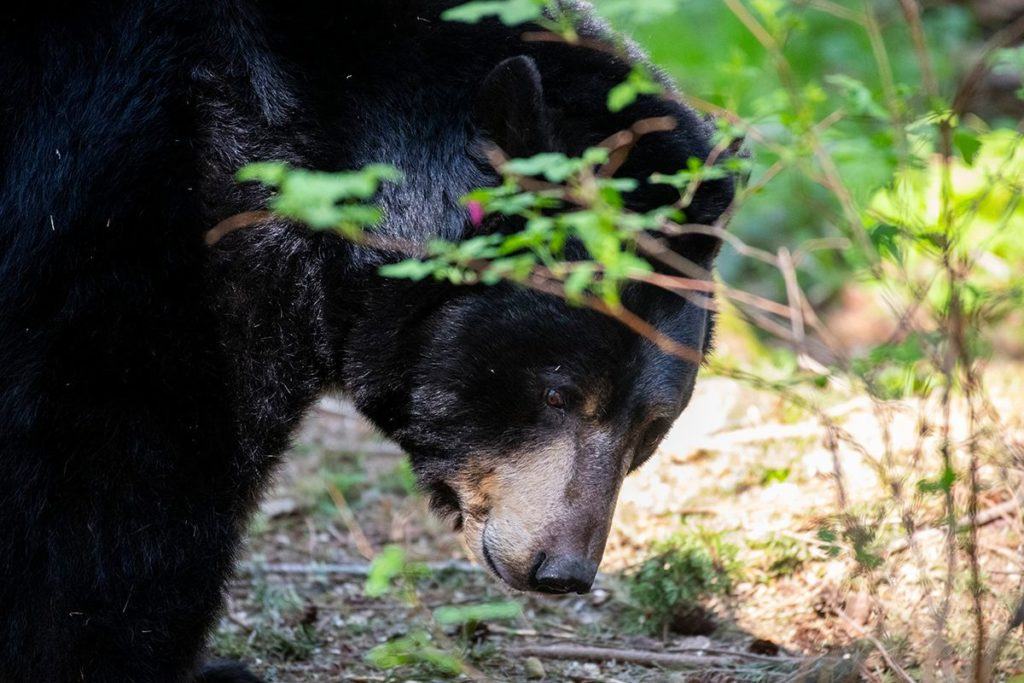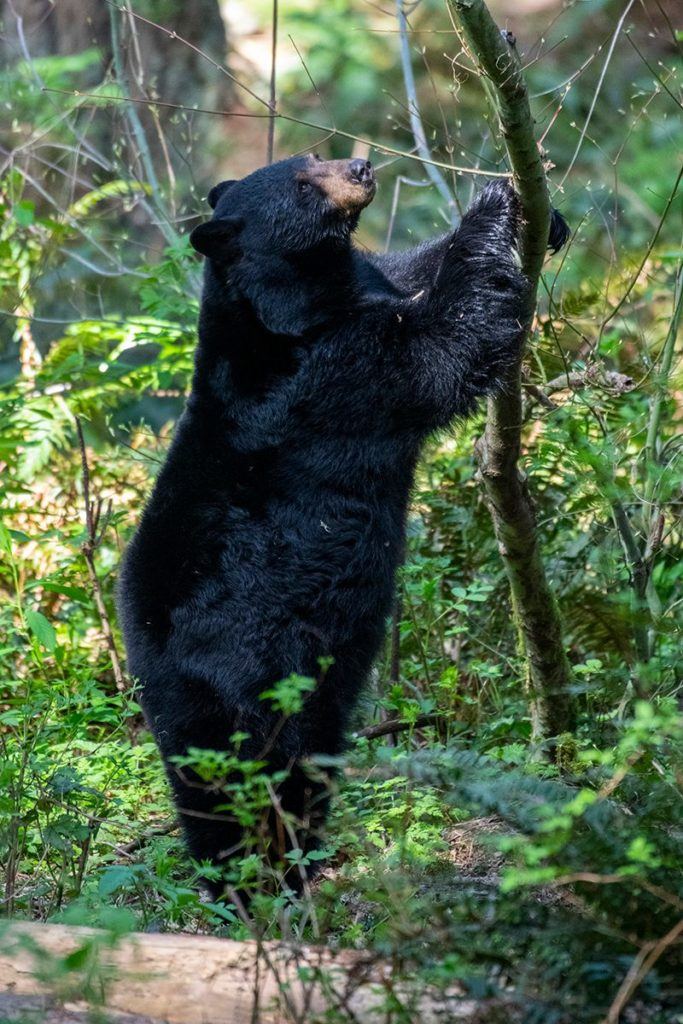Both the black bears and grizzly bears are well-awake from their winter naps and energetic in their habitats at Northwest Trek. The grizzly “brothers” are playful and can often be seen splashing in their 7-foot deep pool, wrestling one another, head-butting and searching for hidden treats keepers have left them. The black bears next door can also be seen walking or running through their habitat and playing with enrichment from the keepers. It’s an exciting time of year for both the bears and the visitors who get to see them! But, seeing bears in the wild, while exciting, requires you to have some knowledge, or what we call being “bear-aware.”

Prepare to Share (the forest)
Black bears are the most prevalent in Washington, with a few grizzlies found in the North Cascades and Selkirk Mountains. Bears are hungry when they wake up from hibernation, and get right to searching for food. Bears are looking for deer, elk, moose, berries and vegetation to fill themselves up. People are not a bear’s first, second or even third option to eat- in fact, bear attacks are pretty rare! That being said, bears could come near you for the food you have with you. When you’re enjoying nature in bear country, make sure you’re being responsible with these tips:
- Hike and travel in groups.
- If you’re camping, set up well before dark at a site with plenty of trees to hang your food bags
- Look for signs of recent bear activity like scattered trash, fresh tracks or scat, or clawed trees. If you see these, maybe find another site.
- Choose a site well away from obvious wildlife trails, stream banks or lake shores, and food sources like berry bushes.
- If possible, set up your own cooking area at least 100 yards from your sleeping area.
- Never keep food or other scented things in your tent (drinks, snacks, chocolate, toothpaste, soap, etc).
- When you sleep or leave the site for the day, store all food in a bear-proof container or hung from a tree at least 10 feet off the ground and 4 feet from the trunk. Don’t leave food in your car and keep doors and windows closed.
- Pack out all your garbage. Don’t bury or burn it – bears will be attracted to the smell.
- Don’t burn citronella items in camp – bears love the smell.

If a bear does notice you, you can deescalate the situation with these tips from the National Park Service:
- Identify yourself by talking calmly so the bear knows you are a human and not a prey animal. Remain still; stand your ground but slowly wave your arms. Make yourself look as large as possible.
- Pick up small children immediately.
- If the bear is stationary, move away slowly and sideways; this allows you to keep an eye on the bear and avoid tripping. Moving sideways is also non-threatening to bears. Do NOT run, but if the bear follows, stop and hold your ground. Like dogs, they will chase fleeing animals.
- Be especially cautious if you see a female with cubs; never place yourself between a mother and her cub, and never attempt to approach them.
Visit the bears at Northwest Trek
Come visit both black bears and grizzly bears at Northwest Trek and learn more about what makes them so special to the Pacific Northwest. Guests can now get an even better view of the grizzlies than previous years, thanks to an overlook platform. Positioned above the fence from the upper walking path, the platform gives a 180-degree clear view over the habitat– perfect for bear-spotting (and photos, too).